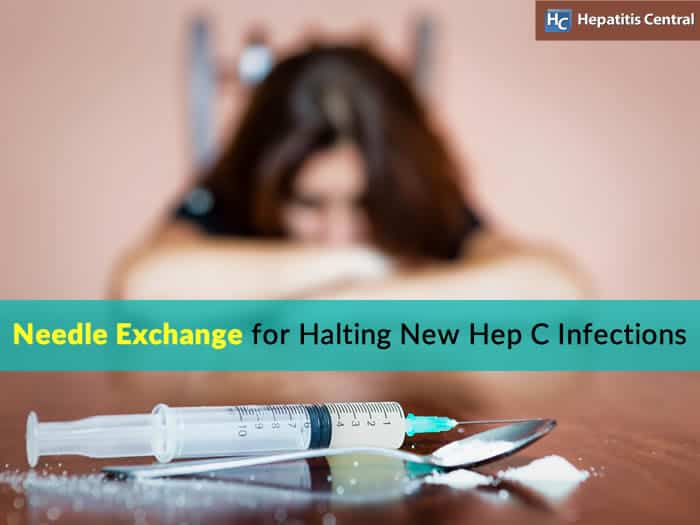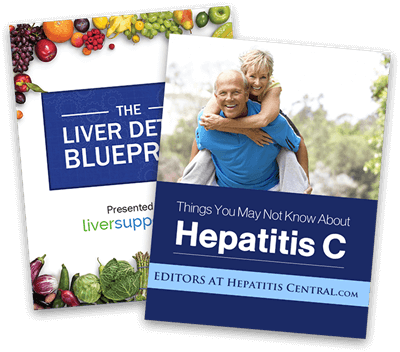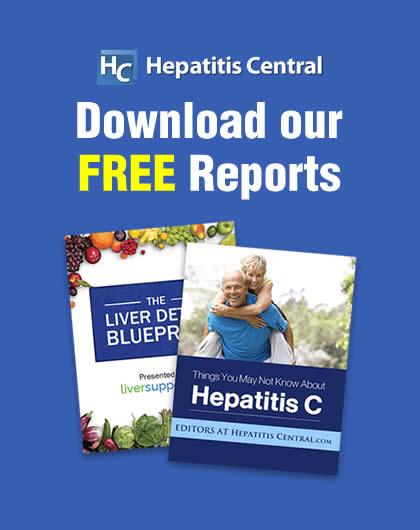Needle Exchange for Halting New Hep C Infections


Harm reduction programs do not condone or stop intravenous drug use, but they are proven routes for preventing infections spread through needle sharing. In light of the growing dilemma of injection drug use, supplying users with clean needles is a logical approach to reduce the occurrence of new Hepatitis C infections.
After years of subpar treatment, Hepatitis C medications finally boast a high success rate. Unfortunately, the cost of treating Hepatitis C exceeds the average American’s annual income and has the potential to exert a catastrophic strain on the economy. The financial ramification of treating this illness is just one reason that public health advocates tout prevention to stop this virus’s spread.
Without a preventative vaccine, experts are targeting the population most likely to acquire a new Hepatitis C infection: injection drug users.
Opioid Epidemic
The rise in injection drug use is due to our nation’s opioid epidemic, a problem born from the unprecedented growth of prescription painkillers:
- Between 1991 and 2011, the number of opioid prescriptions (such as Vicodin, Oxycontin and Percocet) filled by American retail pharmacies increased from 76 million to 219 million.
- Because patients develop a tolerance to opioids with long-term use, the potency must increase to provide the same level of pain relief.
- In 2002, 1 in 6 pain medication users took a pill more powerful than morphine.
- By 2012, one in three pain medication users took a pill more powerful than morphine.
The resulting cycle of addiction to a medication that requires greater and greater potency to achieve the same effect led to government intervention:
- Drug monitoring programs are now standard practice for opioid prescriptions.
- Unscrupulous doctors who prescribe irresponsibly are being arrested.
- Pharmaceutical companies are reformulating their pain medications to make them less prone to abuse.
Heroin Crisis
Although the efforts to make it harder to obtain opioid painkillers are well intentioned, it has single-handedly fueled our country’s heroin crisis. Heroin is the ultimate opioid and is cheap, plentiful and works best when injected.
- In 2014, more Americans sought treatment for heroin than for any other drug.
- In 2015, as total opioid-related deaths grew by 15%, heroin-related deaths increased by 23%.
Recently released data shows that the opioid epidemic is worsening, and fentanyl is largely to blame. Fentanyl is a synthetic opioid painkiller 50 to100 times more powerful than morphine. As patients introduced to fentanyl hit their maximum allowed prescription quantity, the transition to injecting heroin becomes more likely.
Besides the harm that can result from using heroin, sharing of intravenous needles is the most common route for acquiring a new Hepatitis C infection.
Hep C Rates and Costs – Alaskan Example
A recent Alaskan study found that the Hepatitis C rate among young people doubled between 2011 and 2015. The problem is much worse in rural parts of the state, like the remote islands of Southeast Alaska where the rate of new Hepatitis C infections has risen by 490% in that same time period.
The high cost of Hepatitis C drugs complicates the battle. These drugs cost as much as $95,000 for a 12-week treatment. A recently commissioned evaluation puts the problem in a financial perspective. According to a report prepared by the McDowell Group for the Alaska Mental Health Trust Authority, treating all Alaskans who contracted Hepatitis C from injecting drugs in 2015 would cost $90 million dollars. With an estimated 3.5 million Americans currently believed to have Hepatitis C, treating everyone who is infected would cost approximately $331 billion dollars – more than total drug spending in 2013. Hence, it is no wonder that efforts to prevent the transmission and spread of Hepatitis C are on the rise.
Harm Reduction
Gaining popularity at the height of the HIV epidemic, harm reduction is a public health philosophy and intervention that seeks to reduce the harms associated with drug use and ineffective drug policies. A basic tenet of harm reduction is that there has never been, and will never be, a drug-free society. Without the worry of being judged or arrested for illicit drug use, needle exchange programs are an essential component of harm reduction.
Needle exchange allows intravenous drug users to safely dispose of used needles and syringes, and receive new ones. Public health advocates believe that these exchanges are extremely cost effective in the long-term — especially when it comes to preventing people from getting Hepatitis C in the first place or spreading it to others.
The new medications to treat Hepatitis C are a godsend, but they are just one component of conquering this virus. Preventing Hepatitis C’s spread is just as valuable, if not the most important aspect of its eradication. Until a preventative vaccine for Hepatitis C is available, needle exchange programs for intravenous drug users reduces the sharing of needles – thus reducing the number of newly acquired Hepatitis C infections.
https://harmreductionjournal.biomedcentral.com/articles/10.1186/s12954-017-0156-z, Needle exchange programs for the prevention of hepatitis C virus infection in people who inject drugs: a systematic review with meta-analysis, Stephen M. Davis, et al, Retrieved August 30, 2017, Harm Reduction Journal, May 2017.
http://www.drugpolicy.org/harm-reduction, Harm Reduction, Retrieved September 3, 2017, Drug Policy Alliance, 2017.
https://www.economist.com/blogs/graphicdetail/2017/03/daily-chart-3, America’s opioid epidemic is worsening, Retrieved September 3, 2017, The Economist Newspaper Limited, Ltd, 2017.
http://www.mcdowellgroup.net/wp-content/uploads/2017/03/mcdowell-group-economic-impacts-of-drug-abuse-final-3.10.17.pdf, The Economic Costs of Drug Abuse in Alaska, 2016 Update, Retrieved September 3, 2017, McDowell Group, March 2017.
http://www.npr.org/sections/health-shots/2017/08/29/547054395/syringe-exchange-program-aims-to-slow-hepatitis-c-infections-in-alaska, Syringe Exchange Program Aims To Slow Hepatitis C Infections In Alaska, Zachariah Hughes, Retrieved August 30, 2017, NPR, 2017.
http://www.pharmacytimes.com/resource-centers/hepatitisc/will-hepatitis-c-virus-medicaton-costs-drop-in-the-years-ahead, Will Hepatitis C Virus Medication Costs Drop in the Years Ahead?, Laurie Toich, Retrieved September 3, 2017, Pharmacy and Healthcare Communications, 2017.








3 Comments
Lord knows the UK is hardly perfect in the way it treats drug addicts, but we’ve had needle exchange programmes for decades in local pharmacies at no cost to users. You guys should roll this out nationwide.
Outstanding article. Well researched and intelligenty presented. I have no idea where I contacted Hep C back in the late 60’s or early 70’s. It could have been from intravenous drug use or from improperly sterilized medical equipment. The point is, whether it was because of my own irresponsible drug use or not, it ended up costing the system (I had good insurance) well over $100,000 to finally treat me. It could still cost the system (now, Medicare) substantially more money if I develop complications from cirrhosis caused by my infection with the Hep C virus. The authors of this article, rightly did not condone illegal drug use. Our main focus should always be the prevention of irresponsible behavior but as the article points out, we will always have some level of drug abuse in our society no matter what we do to prevent it. We all know that drug abuse is on the rise and a lot of it is because of the drug and medical industry indiscriminately prescribing the use of opioids. Thankfully, our country seems to be coming to grips with this epidemic but the untold costs associated with it are staggering. It could easily bankrupt our health care system just to treat the infection of Hep C. Needle exchange programs (harm reduction) seems like a sensible step in the right direction to help curb the skyrocketing infection rates and ultimately saving all of us a ton of money. We also have got to address the costs of the drugs to treat Hep C. I believe in our system of free enterprise and capitalism but when it boils down to a national crisis, such as the Hep C epidemic, we have got to face the economic reality that it could bankrupt the system and come up with a better plan than the current one in place. When we went after polio when I was a kid, it was a national effort on every front (more like a war) and I don’t remember the drug companies getting insanely rich over it. A reasonable profit is one thing but bankrupting the system for the benefit of a few does not seem in the best interests of the country. Just my opinion.
So we sue the pharmaceutical companies….. Not too smart. By cutting down on the prescribing of much needed pain meds, this action is only going to cause hurting people to turn /seek relief in any way possible, creating more overdoses, illnesses, etc..This subject desperately needs to be fully discussed, with every aspect as well as avenue explored. *Sandy Robertson, I’ve searched without success, a way to assist, to implement a harm reduction program in my little town ~ yet have come up blank. I have used as well as seen such programs in action in bigger towns/cities (Santa Cruz, Salt Lake City). Am ready to help in whatever way possible…..any ideas?